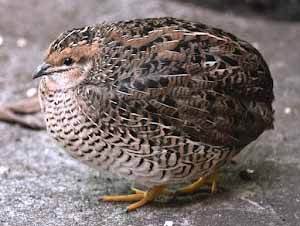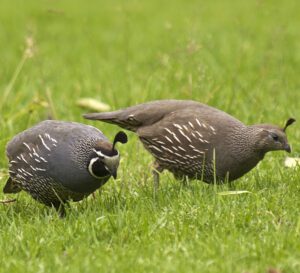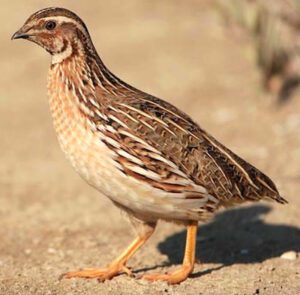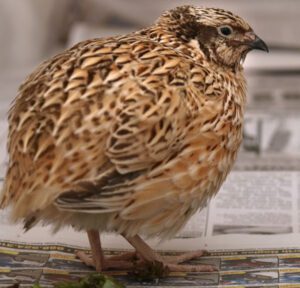Raising quail for eggs is profitable. Quails are smaller sized birds, but they are very good alternative to laying chickens.
Like many other poultry birds, the quails are highly productive and they produce good number of edible eggs. And quail eggs are considered a delicacy in some countries.
Along with very high egg production rate, quails are much cheaper to by and they require less care and management. They also require less space and food compared to other poultry birds such as ducks or chickens.
Raising Quail for Eggs
Raising quail for eggs and also for meat is gaining popularity day by day. Quails require less space, less food and less care and they can be kept in both rural and urban area.
They are great alternative to chickens or ducks and their eggs are of good quality. However, here we are describing more about raising quail for eggs.
Step 1. Know About The Laws And Regulations
First of all be sure about the laws and regulations in your area about quail farming. Ensure whether there are regulations put in place from the government of your area. Some areas or states may require a permit for raising quails.
And raising quails can be completely banned in some areas. So, ensure about the laws and regulations before thinking about raising quail for eggs.
Step 2. Select Breed
There are many quail breeds available throughout the world. Some of those breeds are good for meat production, and some are good for producing eggs.
And some quail breeds are very good for both meat and egg production. But in case of raising quail for eggs, you must have to choose those breeds which are good for egg production.
Generally Button and Japanese quails are very good and the most common breed for producing eggs. We recommend Japanese quail for producing eggs.
Step 3. Determine the Number of Birds
Determine the number of quails you want to have. Quails requires less space compared to other poultry birds (such as chickens or ducks).
You can raise up to 6 quails in the same space required for raising a chicken. If you want to raise quails commercially, then the numbers will be high.
But a few quails will be enough if you want to raise the quails for personal egg collection. A female quail generally lay between 3 and 4 eggs a week. So set the number of birds depending on the number of eggs you want to have.

Step 4. Buying Quail Chicks
You can purchase quail chicks from any of your nearest quail breeders or from any pet supply store in your area. You can also order online, or search your local classifieds. You can also hatch quail eggs if you have an incubator. Purchasing fertile eggs for hatching will cost less than purchasing chicks. Learn more about hatching quail eggs.
Step 5. Caring Quail Chicks
Set a brooder before purchasing and bringing the chicks home. Use a container or plastic box for bringing the chicks. Plastic box or any such container can be used as brooder.
The brooder needs to be comfortable and safe for the chicks, because it is going to be the home for the next 3-5 weeks. Add absorbent bedding inside the brooder, and wood shavings can be very good for this purpose.
Keep adequate number of feeder and waterer inside the brooder. You can purchase smaller sized feeder and waterer from your nearest farm store.
Keep a heat lamp inside the brooder to keep the chicks warm. The quail chicks will require heat for 3-5 weeks or until they grow their basic feathers.
Set the heat lamp at 95 °F for the first week and lower the temperature gradually at the rate of 5 °F each week until it reaches room temperature.
Step 6. Caring for Quails
Transfer the quails to their permanent home after their 3-5 weeks of age. Feed them properly and adult quail generally require a lot of protein. So ensure feeding them protein enriched food. You can purchase ready-made quail feeds from the market.
You can also feed the birds with layer chicken feed if commercial quail feed is not available in your area. And always try to supply with sufficient clean water.
Ensure enough space is available per bird inside the house. Because over-crowding will become a problem for your birds as they get older.
They may get aggravated and start fighting if you can’t give them enough space. Clean the cage on a regular basis. It is also good if you can separate the male and female birds.
One male is enough for every 5-10 female quails. You can separate the male and female by their 6 weeks of age. Read more about differences between male and female quail.
Step 7. Caring Laying Hens
Caring laying hens/female quails is the key for getting good number of eggs from your birds. Here we are describing more about caring for laying quails.
- Ensure Suitable Environment: You must have to ensure a very good and suitable environment for keeping quails happy and also for getting good number of eggs. A cage that hangs above the ground with an opening and the waste distributed below is very good for better egg production purpose. And it will be better if the cage is isolated from other noise and animals and get plenty of fresh air and light. Generally a barn or shed is good place for holding your birds, because it provides a weather-proof area isolated away from potential threats.
- Keep Some Nesting Boxes: Keep some nesting boxes inside the cage. Because female quails require a comfortable place for laying their eggs. General or common chicken nesting boxes will be too large to provide comfort to the birds. So giving them aviary bird box will be good or purchase quail nesting boxes from the market. But don’t give them empty box, and if possible fill the box with wood shavings, hay and few nesting materials. Generally quails lay eggs on the ground in a nest.
- Provide the Laying Birds With More Space: Generally a laying quail require at least around 1 square foot of floor space. The more space you can give your birds the less issues your birds will face.
- Adequate Feeding: Always try to feed your birds with adequate and quality foods. Regular quail feeds should contain over 20 percent protein enriched food. Also if possible provide a source of calcium in the cage. Calcium is necessary for the birds and it will promote a strong and healthy egg production from your hens. Crushed oyster shells or crushed egg shells are good source of calcium.
- Lighting: Proper lighting stimulates egg production. Provide artificial lighting in the quail’s cage if there is no natural lighting. You need to arrange about 14 hours of lighting a day for maximum egg production. But anyhow don’t exceed 16 hours of light per day, because your birds also need some dark time for sleeping.
Step 8. Collecting Eggs
Check the nesting boxes daily and handle the eggs with care, because quail eggs are very small and fragile. Use your fingers to pick the eggs up and transfer them into an egg collecting container (such as a basket). Generally quail eggs can last up to a week and even more if refrigerated. Always wash the eggs before using.
These are the steps for raising quail for eggs. Hope this guide has helped you. Good luck and may God bless you!






